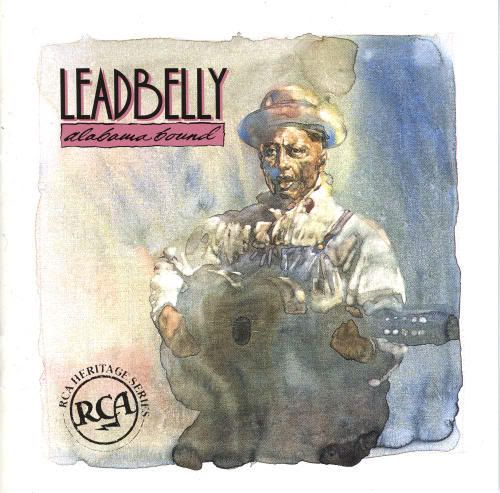
Jazz reached the height of its popularity with the American public during the Swing era, beginning in the dark days of the Depression and continuing through the victorious end of World War II. Also known as the Big Band sound, Swing jazz was characterized by its strong rhythmic drive and by an orchestral ‘call and response’ between different sections of the ensemble. The rhythm section – piano, bass, drums and guitar – maintained the swinging dance beat, while trumpets, trombones and woodwinds, and later, vocals, were often scored to play together and provide the emotional focus of the piece. This arrangement resulted in a ‘conversational’ style among sections that arrangers exploited to maximum affect. By performing their music with increasingly complex arrangements for ever larger orchestras, Swing musicians helped erode the wall between our definitions of popular music and the art music generally labeled “classical.”
The first great artists of Swing were African American. By the early 1930s, Fletcher Henderson, Duke Ellington, and Jimmy Lunceford had begun to blend the “hot” rhythms of New Orleans into the dance music of urban America in the black jazz clubs of Kansas City and Harlem. Although white jazz musicians had been taking inspiration from African American artists for at least three decades, by the 1940s a new generation of white musicians and dancers were deeply invested in the music that Duke Ellington christened “Swing” with his 1932 hit record, “It Don’t Mean a Thing If It Ain’t Got That Swing.” In 1935 white bandleader and clarinetist Benny Goodman led swing into the popular mainstream, but only after he began playing the arrangements he purchased from Fletcher Henderson. Goodman would go on to gather an extraordinary group of performers into his high-profile band, including Henderson, Gene Krupa, Lionel Hampton, Peggy Lee and Stan Getz. His decision to integrate his group with black musicians helped begin the slow process of integrating the music industry.
At its height in the years before World War II, Swing jazz was America’s most pervasive and popular musical genre. If Ken Burns’ documentary series Jazz, is correct in its interpretation of the story of Swing as a music that helped America remake the world during and after World War II, then the history of Swing must also be seen as preparing the way for the Civil Rights movement of the 1950s. Knowing that a wider and increasingly diverse population of Americans was taking African American musicians seriously fueled a growing conviction that equality was a real possibility. As black soldiers shipping off to Europe and the Pacific during World War II were demanding greater respect and tolerance in the armed forces, black Americans at home called for a “Double V” – Victory abroad for America over Germany and Japan and Victory over racism for black Americans at home.
CD 01:
01. Count Basie - One O Clock Jump (1942)
02. Duke Ellington - Harlem Air-Shaft (1940)
03. Lionel Hampton - Slide, Hamp, Slide (1945)
04. Earl Hines - Xyz (1939)
05. Erskine Hawkins - Tippin In (1945)
06. Red Norvo - A-Tisket A-Tasket (1938)
07. Cab Calloway - Minnie The Moocher (1942)
08. Louis Armstrong - You Rascal, You (1941)
09. Chick Webb - Go Harlem (1936)
10. Fletcher Henderson - Stampede (1937)
11. Andy Kirk - Moten Swing (1936)
12. Chick Webb - Facts And Figures (1935)
13. Fletcher Henderson - Moten Stomp (1938)
14. Lionel Hampton - Playboy (1946)
15. Count Basie - It's Sand Man (1942)
16. Earl Hines - Father Steps In (1939)
17. Duke Ellington - Jump For Joy (1941)
18. Benny Carter - Just You, Just Me (1945)
CD 02:
01. Erskine Hawkins - Good Dip (1945)
02. Earl Hines - Number 19 (1940)
03. Count Basie - Seventh Avenue Express (1947)
04. Duke Ellington - Main Stem (1942)
05. Lionel Hampton - Flying Home (1942)
06. Chick Webb - Liza (1938)
07. Fletcher Henderson - Hotter Than Ell (1934)
08. Andy Kirk - Lotta Sax Appeal (1936)
09. Red Norvo - Daydreaming (1938)
10. Count Basie - Love Jumped Out (1940)
11. Duke Ellington - Squaty Roo (1941)
12. Chick Webb - Spinnin The Web (1938)
13. Cab Calloway - Pluckin' The Bass (1939)
14. Louis Armstrong - Leap Frog (1941)
15. Earl Hines - Comin' Home (1940)
16. Benny Carter - Forever Blue (1945)
17. Lionel Hampton - Air Mail Special (1946)
18. Erskine Hawkins - Holiday For Swing (1945)
























_cover.jpg)


